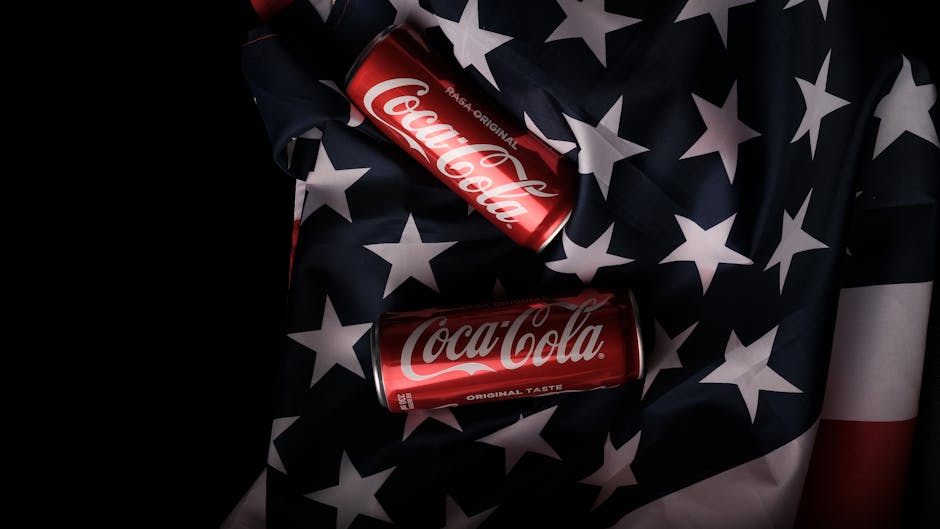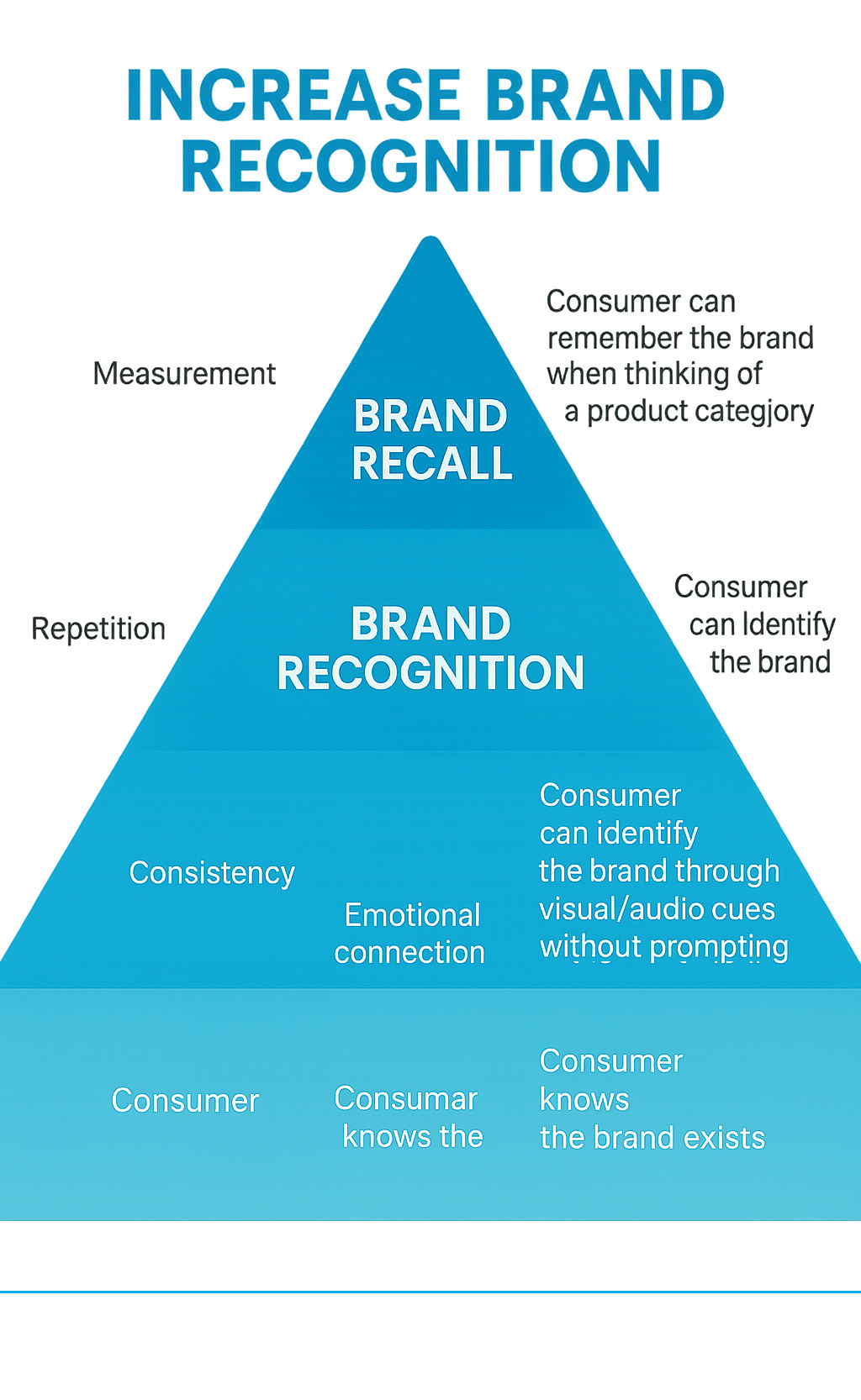The Recognition Roadmap: Your Guide to Unlocking Brand Power
Master the roadmap to increase brand recognition. Build identity, leverage psychology & AI for lasting brand power and consumer trust.
Master the roadmap to increase brand recognition. Build identity, leverage psychology & AI for lasting brand power and consumer trust.

When you need a tissue, do you ask for a Kleenex? This reveals the ultimate goal of brand recognition: becoming so embedded in consumers' minds that your brand name replaces the product category. To increase brand recognition effectively, you need a strategy built on visual consistency, repeated exposure, emotional storytelling, and psychological triggers, all amplified by digital tools and AI.
Brand recognition goes far beyond simple awareness. Awareness means people know you exist; recognition is their ability to identify your brand through visual or auditory cues—logos, colors, jingles—without seeing your name. The stakes are high for tech startups. Consumers are 81% more likely to remember your company colors than your name, and brands with consistent presentation increase revenue by as much as 33%.
In competitive markets, brand recognition is the deciding factor that justifies premium pricing. Companies that master this journey don't just build products; they build brand equity that becomes a competitive moat. Organizations with strong branding outperform the market by a massive 73%, proving that recognition translates directly to business value.
I'm Tony Crisp, and I've helped tech companies from startups to Fortune 500 brands increase brand recognition through data-driven creative strategies. My approach combines foundational brand building (LaunchX), psychological growth tactics (OrbitX), and AI-powered amplification to create brands that command attention and justify premium pricing.

Increase brand recognition terminology:
To increase brand recognition, you must start with a solid foundation. Our LaunchX methodology focuses on building your brand identity—your company's DNA—from the ground up. It’s the complete personality of your business, defining how it looks, sounds, and feels. Without this, marketing campaigns feel scattered and forgettable.

When people see the golden arches, they don't need to read "McDonald's" to know the brand. That's the power of strong visual branding.
Your descriptive logo should tell your story at a glance. A study of 597 logos revealed that logos clearly showing what a company does are far more effective than abstract ones. If your logo hints at your service, you're already more memorable.
Color is your secret weapon. Consumers are 81% more likely to remember your company colors than your name. When you pick your color palette, you're not just decorating; you're creating a mental shortcut that leads straight back to your brand.
Typography speaks volumes about your personality. A playful font sends a different message than a sharp, angular one. Consistency is key; your font should feel like the same "person" across your website, business cards, and social media.
The magic happens when these visual themes work together. Every touchpoint should feel like it belongs to the same brand family. This visual harmony transforms scattered marketing into a cohesive brand experience that people recognize instantly.
For deeper insights, check out our guide on Logo and Brand Identity Design.
Beyond visuals, your brand needs to make people feel something. This is where it transforms into something people care about.
Your brand personality is your company's character. Is it a friendly neighbor or a trusted advisor? This personality should shine through in all your content and customer interactions.
Narrative development creates the real connection. Every brand has a story—the problem you solve, your journey, the future you're building. Your story must be genuinely yours; people can spot fake authenticity from a mile away.
The brands that stick are those that make us feel something. They sell dreams and solutions, not just products. Tapping into emotions like excitement or relief creates lasting memories.
Authenticity ties it all together. In a connected world, people research everything. The brands that increase brand recognition most effectively are those that stay true to who they are.
This foundational work is essential. As we explore in Building Brand Identity, defining these core elements now prevents confusion later. A solid foundation makes all other marketing efforts more effective.
With a solid foundation, it's time to leverage psychology. Our OrbitX methodology taps into how the human brain works to make your brand unforgettable. In a world of constant brand messages, the ones that break through understand the mind's psychological shortcuts.

The science is fascinating. Our brains prefer things we've seen before—the mere exposure effect. Familiarity creates cognitive ease, making your brand easier to process. This isn't just theory; it's why brands with consistent presentation increase revenue by as much as 33%. The mere exposure effect doesn't just create recognition; it makes people like your brand more. Each interaction builds familiarity bias, where customers naturally gravitate toward brands they've encountered before.
To increase brand recognition, repetition is key. The more customers see your brand, the stronger the neural pathway becomes. The 5-7 impressions rule reflects this, but impressions must feel natural, not forced.
Omnichannel marketing is your secret weapon. Instead of hammering one channel, create a cohesive experience across their day: a LinkedIn post in the morning, a partner newsletter at lunch, a retargeting ad in the evening. Consistent messaging is crucial; your brand's voice and personality must be distinct and uniform everywhere.
Remarketing campaigns are where this pays off. By staying present in a non-pushy way after a site visit, you build familiarity, which breeds preference. As we cover in our guide on Social Media and Brand Building, consumers are 77% more likely to buy from brands they follow on social media—a testament to repeated, positive exposure.
Recognition without trust is just awareness; recognition with trust becomes preference, which drives business value.
Customer experience is the primary battleground. Every interaction strengthens or weakens a customer's mental model of your brand. Exceeding expectations builds neural pathways that associate your brand with positive emotions.
Social proof is a powerful psychological shortcut. When potential customers see others praising your brand, they're more likely to trust it. This makes user-generated content invaluable—it's not just free marketing, but psychological validation.
Social responsibility taps into our need for purpose. When your brand stands for something beyond profit, customers become emotionally invested. Value-based pricing becomes possible when you've built this foundation; 46% of consumers will pay more for brands they trust.
Referral programs leverage the ultimate psychological force: a personal recommendation. This organic recognition comes pre-loaded with trust.
This psychological approach builds on itself: familiarity builds trust, trust builds preference, and preference builds advocacy. For more on this, see our guide on Building Brand Advocacy. This isn't just about increasing brand recognition; it's about building a competitive moat.
With your foundation and psychological tactics in place, it's time to amplify your signal. Modern digital marketing, fueled by AI, is indispensable to increase brand recognition and reach the right audience efficiently.

This phase is about turning up the volume on your brand, using data-driven creativity to ensure every effort contributes to measurable growth.
Content marketing builds recognition organically by establishing expertise and trust through valuable blog posts, case studies, and guides. It works 24/7 to attract and educate potential customers.
Video content is king for engagement, but with average social media ad view times at just 3.4 seconds, your brand must be visible instantly. Videos are highly effective for storytelling and creating emotional connections.
Podcasts offer an authentic way to connect, with half of Americans aged 12-34 listening regularly. Hosting a podcast positions you as an authority and fosters a loyal following.
Thought leadership involves positioning your experts as authorities by publishing opinion pieces, creating industry reports, or participating in panels. This builds credibility and recognition.
Social selling and community building are powerful. Encouraging your team to promote the brand authentically and building a genuine community turns customers into loyal advocates.
PPC advertising and SEO work together to ensure visibility during active searches. Even without clicks, appearing at the top of search results builds familiarity and trust.
For tech companies, our Branding Agency for Tech Companies service combines these elements into a cohesive, high-impact strategy.
How do you know if your efforts to increase brand recognition are working? Tracking key metrics reveals if your brand is sticking.
AI and machine learning are revolutionizing measurement. Predictive AI can analyze vast data sets, visualize customer attention on ads, and optimize content for maximum impact. This allows for data-driven decisions to refine strategies and increase brand recognition more efficiently than ever.
Understanding these metrics is crucial for long-term brand equity. Learn more in our guide on How Can Service Firms Build Brand Equity.
Let's clear up common questions about how to increase brand recognition effectively.
Think of them as levels. Brand awareness is the ground floor: knowing a company exists. Brand recognition is the next level: identifying a brand by its visual or auditory cues (like a logo or jingle) without seeing the name. The highest level is brand recall, where your brand comes to mind first when a consumer thinks of a product category.
This distinction is crucial. Aided recall (recognition) relies on cues, while unaided recall (recall) means your brand lives in someone's memory without prompts. Both require consistent branding, but unaided recall takes much longer to achieve.
Strong brand recognition builds brand equity, which allows you to charge premium prices. Consumers associate recognized brands with quality and reliability, and 46% of consumers will pay more for brands they trust. This trust is built through consistent, positive recognition.
Recognition also fosters customer loyalty, reducing acquisition costs and creating a buffer against lower-priced competitors. Your brand itself becomes a competitive advantage, enabling market longevity. In B2B, branding accounts for about 18% of the decision-making process, proving its importance across all sectors.
Small businesses can be more agile and personal. The key is to focus your efforts.
Even with limited resources, visual consistency is non-negotiable. For custom strategies, our Branding Agency for Small Business services can help build recognition on a smaller budget.
Building a standout brand isn't about a single campaign; it's about weaving a brand recognition strategy into your company's DNA. Mastering this process is like learning to ride a bike: once the components click, it becomes second nature.
Your LaunchX foundation builds the visual vocabulary customers use to recognize you. When your brand colors instantly trigger your company name, you've created foundational brand value.
The psychological tactics in our OrbitX playbook make that foundation stick. Through consistent, repeated exposure, you build the neural pathways that turn strangers into loyal advocates.
AI and digital amplification make this scalable. You can now measure how your brand recognition efforts are performing, adjust in real-time, and optimize for maximum impact.
Our DOSE Method™ weaves these pillars together, combining data-driven creativity with strategic marketing. By building value with LaunchX, executing growth with OrbitX, and leveraging AI for efficiency, you create a recognition engine that works around the clock.
Companies that successfully increase brand recognition aren't just seen—they're remembered, trusted, and chosen. This translates into pricing power, customer loyalty, and a sustainable competitive advantage.
Your brand's journey to the forefront is built on thousands of consistent touches and strategic decisions that put your customers first.
Ready to build a brand that commands recognition? Explore our Launch services and let's start crafting your recognition strategy today.